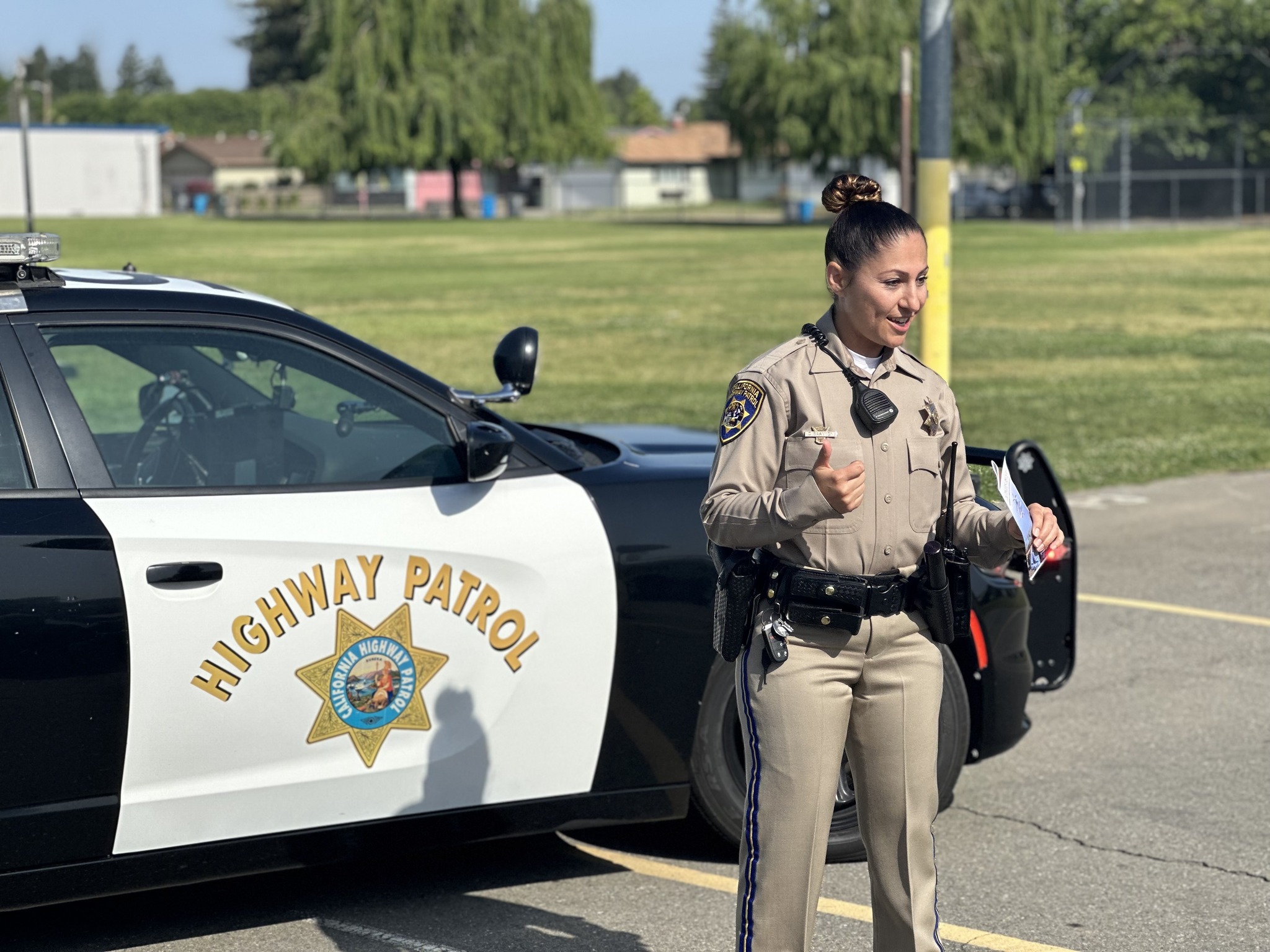SACRAMENTO, Calif. – As we head into the new year, the California Highway Patrol (CHP) is educating the public on traffic safety laws that were passed during this year’s legislative session and signed by Governor Gavin Newsom. The laws referenced below take effect on Jan. 1, 2024, unless otherwise noted.
Vehicles: Registration – AB 256 (Dixon)
Existing law requires current month and year tabs to be displayed on the registered vehicle’s rear license plate. Beginning July 1, 2024, and until Jan. 1, 2030, a violation of vehicle registration shall not be the sole basis for any enforcement action before the second month after the month of expiration of a vehicle’s registration. However, if a vehicle is stopped for any other Vehicle Code violation, enforcement action for a violation of vehicle registration may be taken before the second month following the month of expiration. Late registration fees from the Department of Motor Vehicles will still apply.
Vehicle Removal: Expired Registration (AB 925, Ta)
Requires a peace officer or traffic enforcement official to verify the lack of current vehicle registration with the Department of Motor Vehicles before towing a vehicle for expired registration longer than six months and prohibits the vehicle from being towed if the officer or traffic enforcement official does not have immediate access to those records.
Vehicles: Speed Safety System Pilot Program – AB 645 (Friedman)
The cities of Los Angeles, Oakland, San Jose, Glendale, Long Beach, and the City and County of San Francisco may install a limited number of cameras to enforce speed limits for a five-year pilot period in school zones and designated “safety corridors” – locations that have a high occurrence of fatal and injury crashes – and areas known for illegal street racing. Recorded violations will be subject to a civil penalty.
Vehicles: Stopping, Standing, and Parking – AB 413 (Lee)
Designed to increase visibility at crosswalks, this law prohibits parking or stopping a vehicle along a curb at least 20 feet from a marked crosswalk or 15 feet of a crosswalk where a curb extension is present. The regulation only applies to the side of the road of the vehicle’s approach to the crosswalk. Local jurisdictions may establish different distances through local ordinances by marking areas with signs or paint.
The law removes city and county authority to regulate cruising via local ordinances. Additionally, the law legalizes “lowrider” vehicles to cruise California’s streets, by removing the height restriction on lowered vehicles.
Automobile Dismantlers: Catalytic Converters – AB 641 (Fong)
This law redefined an automobile dismantler to include individuals in possession of nine or more catalytic converters. Additionally, the law creates penalties for individuals illegally acting as an automobile dismantler. Individuals and businesses who have a legitimate purpose for having catalytic convertors, such as repair shops, will be excluded from penalty.
Vehicles: Catalytic Converters – AB 1519 (Bains)
This law makes it illegal to remove a Vehicle Identification Number (VIN) marking from a catalytic converter. It also makes it illegal to possess three or more catalytic converters that have had their VIN markings removed.
Vehicles: Catalytic Converters – SB 55 (Umberg)
This law requires a motor vehicle dealer or retailer to have the catalytic converter engraved or etched with the VIN before a new or used truck or car is sold. The law does allow for the purchaser to decline having the VIN etched or engraved on the catalytic converter.
Emergency Notification: Ebony Alert: Missing Black Young – SB 673 (Bradford)
This legislation establishes the “Ebony Alert,” which allows law enforcement agencies to request the CHP to activate an alert for Black youth, including young women and girls between 12 to 25 years of age, who are reported missing under unexplained or suspicious circumstances, at risk, developmentally disabled, cognitively impaired, or who have been abducted.
Emergency Services: Endangered Missing Advisory – AB 946 (Nguyen)
This new law will aid in the recovery of missing persons who do not meet the age restrictions associated with the AMBER and Silver Alerts. The new law authorizes law enforcement agencies to request the CHP activate the “Endangered Missing Advisory” for public distribution of missing person information within appropriate geographical areas when specific criteria is met.
Vehicle Safety Regulations – SB 68 (McGuire)
This law authorizes the CHP to establish rules and regulations allowing commercial vehicles capable of carrying more than 500 gallons of fuel to exceed the standard
10 hours-of-service limit during Governor-declared State of Emergencies. The exception only applies for the purpose of vehicles transporting fuel for refueling aircraft used in emergency-related activities, including fire suppression.
Pupil Transportation: Driver Qualifications – SB 88 (Skinner)
This law will require drivers and their vehicles which are used by a local educational agency to provide pupil transportation for compensation, to meet certain safety requirements.
Vehicles: Zero-Emission School Buses: Signage – SB 775 (Padilla)
This law authorizes a school district, county office of education, or charter school using a zero-emission school bus to transport pupils at or below the 12th-grade level to place signage on the rear of the zero-emission school bus that identifies the school bus as a clean air zero-emission bus. It also authorizes the CHP to issue guidelines governing the size and placement of that signage.
The mission of the CHP is to provide the highest level of Safety, Service, and Security.
